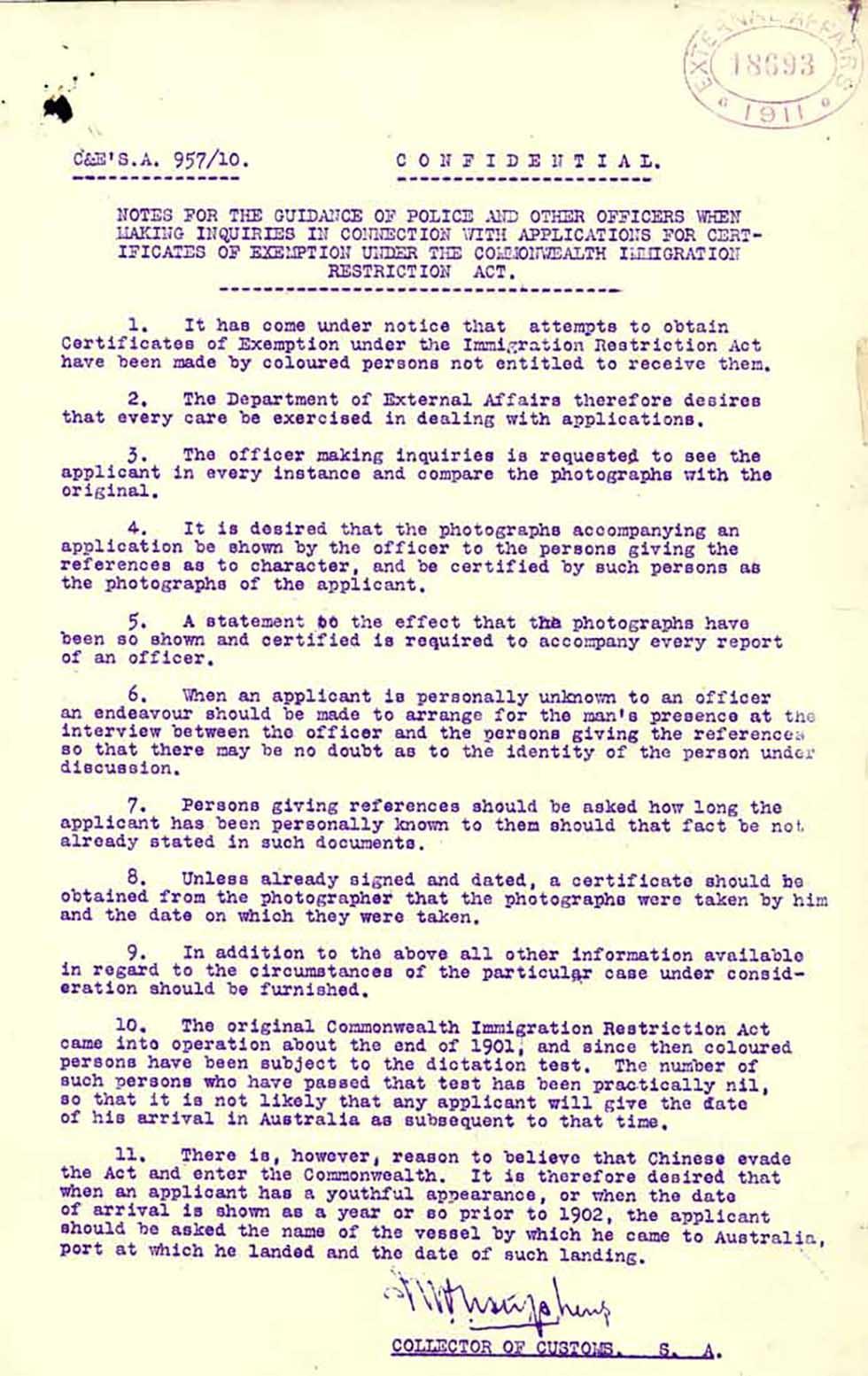
This confidential note contains guidance for authorities regarding certificates of exemption and photography requirements in 1911.
Aboriginal and Torres Strait Islander people should be aware that the National Archives' website and collection contain the names, images and voices of people who have died.
Some records include terms and views that are not appropriate today. They reflect the period in which they were created and are not the views of the National Archives.


This confidential note contains guidance for authorities regarding certificates of exemption and photography requirements in 1911.
[Stamped in purple ink 'EXTERNAL AFFAIRS', '1911', '18693'.]
[Underlined:] C&E'S.A. [Customs & Excise, South Australia] 956/10.
[Underlined:] CONFIDENTIAL
[Heading:] NOTES FOR THE GUIDANCE OF POLICE AND OTHER OFFICERS WHEN MAKING INQUIRIES IN CONNECTION WITH APPLICATIONS FOR CERTIFICATES OF EXEMPTION UNDER THE COMMONWEALTH IMMIGRATION RESTRICTION ACT.
1. It has come under notice that attempts to obtain Certificates of Exemption under the Immigration Restriction Act have been made by coloured persons not entitled to receive them.
2. The Department of External Affairs therefore desires that every care be exercised in dealing with applications.
3. The officer making inquiries is requested to see the applicant in every instance and compare the photographs with the original.
4. It is desired that the photographs accompanying an application be shown by the officer to the persons giving the references as to character, and be certified by such persons as the photographs of the applicant.
5. A statement to the effect that the photographs have been so shown and certified is required to accompany every report of an officer.
6. When an applicant is personally unknown to an officer an endeavour should be made to arrange for the man’s presence at the interview between the officer and the persons giving the references so that there may be no doubt as to the identity of the person under discussion.
7. Persons giving references should be asked how long the applicant has been personally known to them should that fact be not already stated in such documents.
8. Unless already signed and dated, a certificate should be obtained from the photographer that the photographs were taken by him and the date on which they were taken.
9. In addition to the above all other information available in regard to the circumstances of the particular case under consideration should be furnished.
10. The original Commonwealth Immigration Restriction Act came into operation about the end of 1901, and since then coloured persons have been subject to the dictation test. The number of such persons who have passed that test have been practically nil, so that it is not unlikely that any applicant will give the date of his arrival in Australia as subsequent to that time.
11. There is, however, reason to believe that Chinese evade the act and enter the Commonwealth. It is therefore desired that when an applicant has a youthful appearance, or when the date of arrival is shown as a year or so prior to 1902, the applicant should be asked the name of the vessel by which he came to Australia, port at which he landed and the date of such landing.
[Illegible handwritten signature.]
COLLECTOR OF CUSTOMS. S. A.
Learn how to interpret primary sources, use our collection and more.
